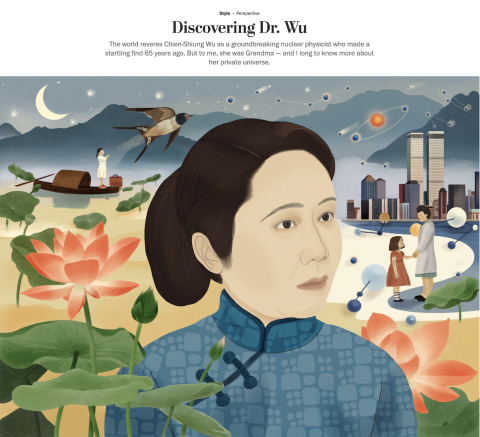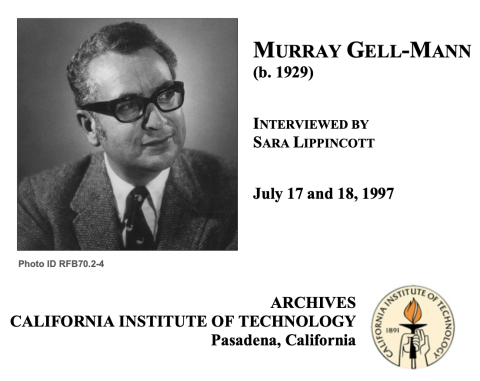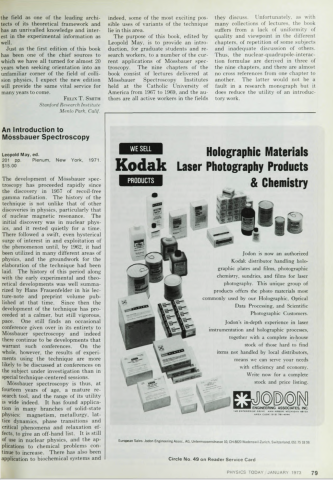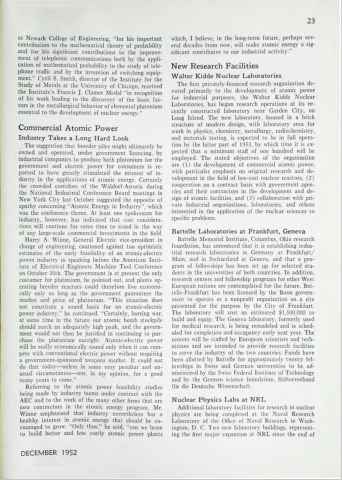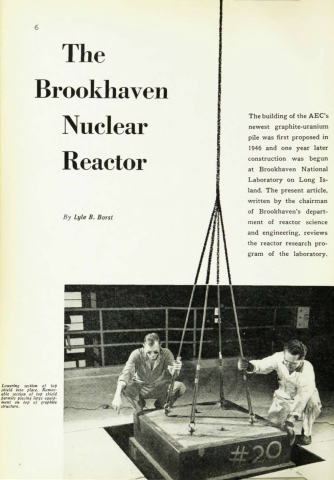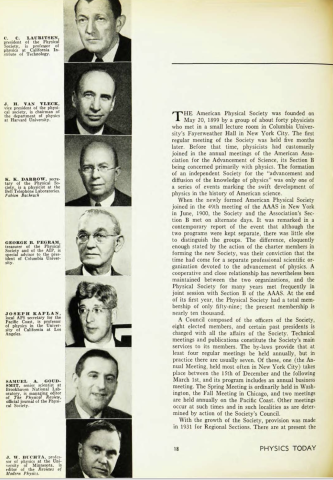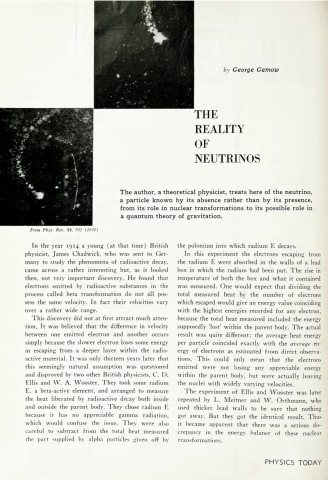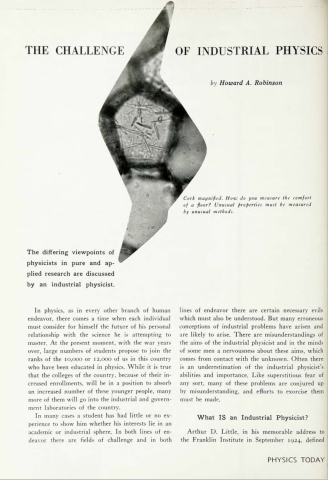GELL-MANN: Let me tell you what happened. I’ve written about it many times, and it works like this. In 1956 and ’57, when it was proposed and confirmed that parity was violated in weak interactions, an attractive theoretical model became available—which I had been toying with, actually, for a number of years. And that was a vector and axial vector picture of the weak interactions, where there was just a single current, with vector plus axial vector terms. The interaction would then be vector plus axial vector times vector plus axial vector. And the cross terms would violate parity, while the square terms would preserve parity. Since parity was known to be violated, this was an acceptable scheme. But experiments in nuclei on beta decay, sponsored by Mrs. [Chien-Shiung] Wu at Columbia and done by [Brice] Rustad and [Stanley] Ruby, and various other experiments, suggested that this vector/axial-vector interaction was wrong and that the actual interaction was scalar and tensor, which made it a much uglier theory. Well, in 1957, Art [Arthur H.] Rosenfeld and I were working at Caltech, writing a review article on the weak interaction for Annual Review of Nuclear Science. And I began to discuss with him how this was an attractive idea and maybe the experiments were wrong. It made for a universal Fermi interaction, and one that was perfectly compatible with an intermediate boson of spin one, which would carry the interaction. It was very appealing, but we were still worried about all these experiments that contradicted this hypothesis.
At that time, Robert Marshak and his student, George Sudarshan, came to visit. Art and I went to meet with them, and I think with Felix Boehm, at RAND, in Santa Monica. We had lunch together. And they told us about their work, in which they had figured out that these experiments could really be wrong—that they could be criticized and perhaps were actually wrong—lending a lot of strength to this very beautiful, fantastically simple theory of the weak interations. I liked that, and I liked the strengthening of confidence that this might work. Art and I had written a section in our Annual Review called “The Last Stand of the Universal Fermi Interaction,” in which we described how, if all these experiments really were wrong, we could have this beautiful theory. They asked whether we were going to publish any more on it. And I said, “Well, I don’t think so. I don’t suppose we will. This is what we’re going to say, and it says most of it.” We always took this very modest approach, and this delaying approach, to publication. I don’t know why. [Sighs] So they started writing something also. They started writing on their ideas, which went further, in the sense that they criticized some of these experiments and showed how they might be wrong.
Then I went away with Margaret on a vacation in Northern California. We were completely out of range of any communication, off in a tent somewhere in the Siskiyou Mountains. When I came back, Richard Feynman had returned from Brazil. And Felix Boehm had told him that I thought the interaction was vector and axial vector. Whereupon Richard said, “Oh, my God! If that’s true, then you can have this beautiful theory. I have just thought of this fantastically beautiful theory!” And then he wrote up this fantastically beautiful theory and gave some rather weird reason for it to be true—some kind of second-order equation, or I don’t know what it was, some strange point of view that he adopted. He always liked to adopt an eccentric point of view in everything, and here he had some weird reason why this theory was preferable. It actually didn’t mean much.
He wrote up an article and was about to send it off for publication when I came back from vacation. And I was horrified, because it seemed so absurd for him to assume that I had this idea of vector and axial vector and hadn’t realized the rest of it. He didn’t know about Marshak and Sudarshan. So I showed him the little paragraph that Art Rosenfeld and I had written, and of course it was in a totally different spirit from Feynman’s. What we had written was: “Look. If these experiments are really wrong, then this beautiful theory could be correct.
This is the last stand of the universal Fermi interaction. The numbers come out right, and everything is really beautiful.” Whereas his said, “I have discovered this fantastic theory! And this beautiful theory, which I have just discovered, says that such-and-such. And furthermore, it’s the only really good theory because of this . . .” and then he presented this rather weird justification.
So I said, “Well, God, if you’re doing that, I have to write up our work, because we had this idea before, and not from this point of view.” And then Bob Bacher said, “Well, I don’t think it’s such a great idea for both of you to write papers on the same thing from the same institution. Why don’t you collaborate on one paper?”
Well, this was very tricky, because Feynman’s rationale—which I found utterly unconvincing, and still do—was the central part of what he had written, and to undo it was very difficult. So it stayed in there, and I felt very unhappy about that. I still feel very unhappy about it.
So I contributed a lot of other ideas, about how to extend the theory to other parts of the world—strange particles and all sorts of other things. But this was done in haste, and I really would have liked more time to think about those things and get them right. Anyway, we published it together [“Theory of the Fermi Interaction” (with R. P. Feynman), Phys. Rev. 109:1, 193-8 (1958)], and it came out in a book in January ’58, or February.
